#siegfried schürenberg
Text
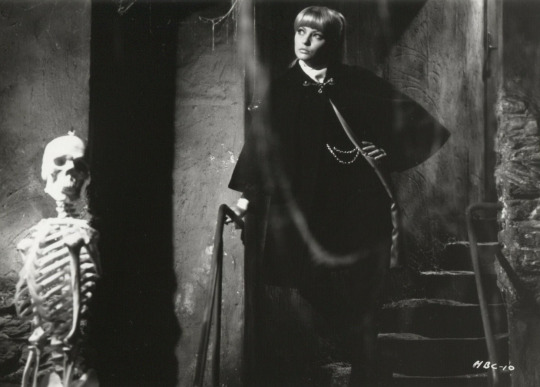






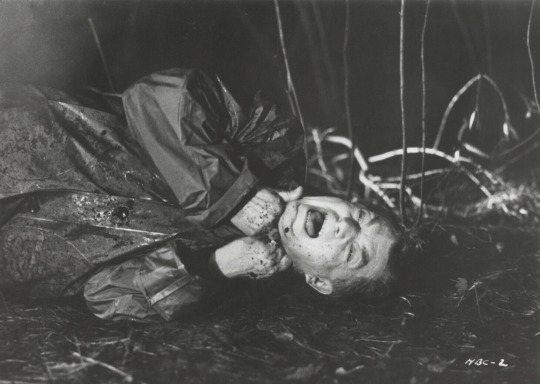
Der Hund von Blackwood Castle (1968)
AKA The Horror of Blackwood Castle, The Hound of Blackwood Castle, The Monster of Blackwood Castle
#der hund von blackwood castle#the horror of blackwood castle#karin baal#heinz drache#kurd pieritz#otto stern#horst tappert#siegfried schürenberg#ilse pagé#agnes windeck#1960s movies#alfred vohrer#horror#krimi
37 notes
·
View notes
Photo


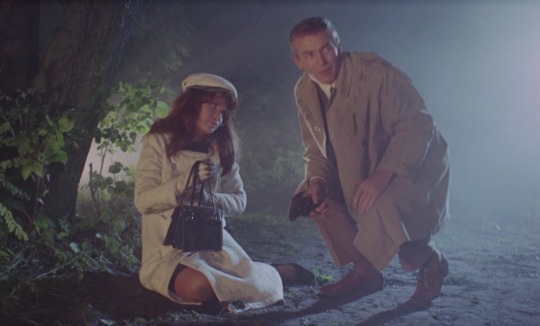







Der Bucklige von Soho | Alfred Vohrer | 1966
#Alfred Vohrer#Der Bucklige von Soho#1966#The Hunchback of Soho#Richard Haller#Karin Kenklies#Joachim Teege#Uta Levka#Günther Stoll#Gisela Uhlen#Pinkas Braun#Siegfried Schürenberg#Hilde Sessak#Suzanne Roquette
26 notes
·
View notes
Text

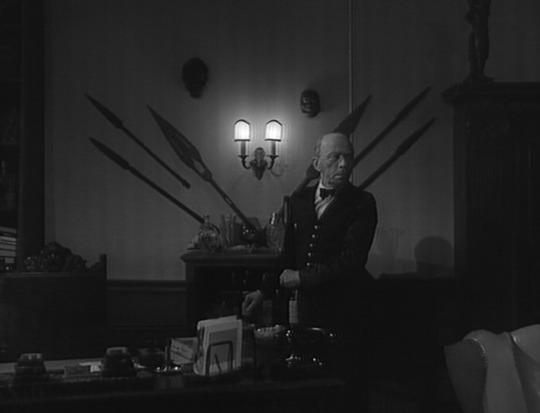

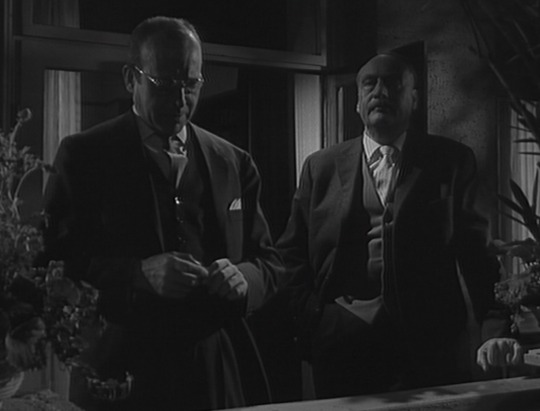



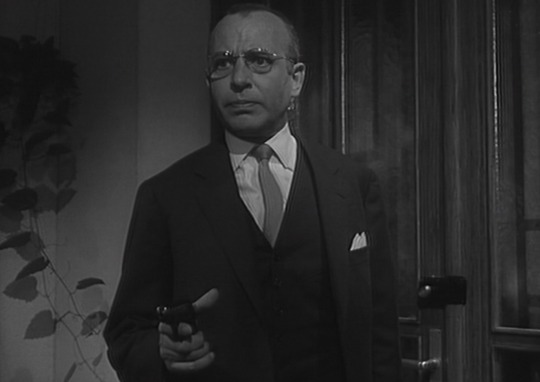




“Ach, nichts Besonderes. Ein Einbruch, ein Diebstahl, ein Mord, sieben Verdächtige und zwei Tote ...”
(Inspektor Marquard)
“Parkstraße 13" (1960)
In ihrer Villa in der Parkstraße 13 hat Evelyn Schratt (Gisela Trowe) einige Gäste zu zu einer Abendgesellschaft eingeladen: der Arzt Dr. Elken (Siegfried Schürenberg), der Schauspieler Ernst Nordau (Hermann Lenschau), Kriminalinspektor Marquard (Konrad Georg), der Globetrotter Thomas Molander (Peter Schütte) und die Baronin Vera Bornegg (Hilde Sessak). Ein ungebetener Gast ist der notorische Einbrecher Paul Mieke (Ralf Wolter), der bei seinem Beutezug im Haus auf frischer Tat ertappt wird.
Die Anwesenden sind darüber irritiert, dass der berüchtigte Glücksspieler Radschin nicht nur zu der Party eingeladen wurde, sondern der Gastgeberin offensichtlich ein Heiratsversprechen abgerungen hat. Besonders bestürzt reagiert Molander, der in Evelyn Schratt verliebt ist und auf eine Ehe mit ihr gehofft hatte. Die attraktive Frau gilt ohnehin als Femme fatale, da ihre beiden Ehemänner unter recht mysteriösen Umständen ums Leben kamen und ihr ein beträchtliches Vermögen hinterließen.
Die bereits belastete Atmosphäre eskaliert, als die Baronin ihren Schmuck vermisst und Radschin erschlagen aufgefunden wird ...
Regisseur Rolf Hädrich, der später mit ambitionierten Literaturverfilmungen hervortrat, ist mit “Parkstraße 13" basierend auf dem gleichnamigen Theaterstück von Axel Ivers ein ebenso spannender wie unterhaltsamer Fernsehfilm gelungen, dessen hervorragender und glänzend aufgelegter Besetzung man mit großem Vergnügen zuschaut, wobei mir das hintergründige Spiel von Siegfried Schürenberg ganz besonders gut gefällt. Hervorzuheben sind ebenfalls die eingängige Musik von Peter Thomas sowie die stimmungsvolle, teilweise erfrischend ungewöhnliche Perspektiven einnehmende Kameraarbeit von Bernd Eismann.
#parkstraße 13#gisela trowe#siegfried schürenberg#hermann lenschau#konrad georg#peter schütte#hilde sessak#ralf wolter#rolf hädrich#deutsches fernsehen#kriminalfilm
1 note
·
View note
Photo

The Bridge (Bernhard Wicki, 1959)
Cast: Folker Bohnet, Fritz Wepper, Michael Hinz, Frank Glaubrecht, Karl Michael Balzer, Volker Lechtenbrink, Günther Hoffmann, Cordula Trantow, Wolfgang Stumpf, Günter Pfitzmann, Heinz Spitzner, Siegfried Schürenberg, Edith Schultze-Westrum, Ruth Hausmeister, Eva Waiti, Hans Elwenspoek, Trude Breitschopf, Hans Hellmold, Edeltraut Elsner, Inge Benz. Screenplay: Michael Mansfeld, Karl-Wilhelm Vivier, Bernhard Wicki, based on a novel by Manfred Gregor. Cinematography: Gerd von Bonin. Production design: Heinrich Graf Brühl, Peter Scharff. Film editing: Carl Otto Bartning. Music: Hans-Martin Majewski.
Something of a landmark in the revival of German filmmaking before the burst of creativity wrought by Volker Schlöndorff, Werner Herzog, Rainer Werner Fassbinder, and others in the 1960s and '70s, The Bridge is an appropriate title in that it not only looks back to what Germany was during the war, but also suggests some of the trauma that lingered into the increasingly affluent present. The decimation and psychic mutilation of the generation that came of age during the war is the film's central subject. It focuses on seven young men, still in their teens, in the final days of the Third Reich, inspired by the dream of military glory but undermined by the incompetence of the remnants of the Wehrmacht, facing a defeat it cannot admit is coming. The boys have grown up together in the same town, and they all receive their draft notices on the same day. But a well-meaning officer decides not to send these raw draftees into the heat of battle but to give them a nonsensical task: defending the bridge across the river near their town -- even though the bridge is slated to be blown up as a deterrent to the advancing Allies. It will keep them out of harm's way, the officer thinks. But communications wires get crossed and the boys on the bridge never get the message to retreat. Instead, they die "heroically," doing all the right things -- including blowing up an Allied tank -- as they make their futile stand. The story, from the novel by Gregor Dorfmeister, under his pseudonym Manfred Gregor, is based on a real event told to Dorfmeister by one of the survivors. The film is full of well-staged action and an effective re-creation of the real setting which had been completely transformed in the years since the war ended. The interaction between the boys and their families is touching without slopping over into mawkishness.
4 notes
·
View notes
Text
* DER HUND VON BASKERVILLE / GERMAN / 1H 22M / 1937
— The English translation of this movie is The Hound of the Baskervilles.
— Bruno Güttner as Sherlock Holmes (Siegfried Schürenberg as the uncredited voice of Sherlock Holmes) and Fritz Odemar as John Watson.
— Directed by Carl Lamac/Karel Lamač and distributed by Bavaria Film.
— Favorite Quality: Barrymore was fantastic, he held this movie together.
It could be that I wasn’t paying close enough attention, but I spent a large portion of this movie confused. The story focuses on every character that is not John or Sherlock, and I believe the duo has less than twenty minutes of screen time; however, I do not mind that as much now as I did while watching. I think it is hilarious to say that my favorite character is Barrymore, whom I barely cared about in the stories, but who was exceptionally petty in this adaptation. There is a running joke where he often appears almost like a jump scare, and I thought it was the funniest thing in the world. He is my favorite character; he was the best part of this movie; I love him. With that said, I have some complaints about this movie, and while I enjoyed it, it still took me two days to finish it. As this movie is old, it is in black and white, but it is so dark the whole time that it’s easy to miss what’s happening—or which character is which. I don’t usually have an issue with black-and-white films, but this one was difficult to watch and often made it unbearably hard to pay attention. As I needed to pay attention to subtitles, I had to rewind to ensure I didn’t miss anything by spacing out or getting distracted. It was tedious, and I nearly fell asleep halfway through the movie. I did not, however, think this was a bad or boring movie—it was a little bland at times, but I also don’t care much for The Hound of the Baskervilles, or I wasn’t in the mood for it. I think it had the funniest lines I’ve heard so far in an adaptation, and I have heard some odd things, but “Why are you a misogynist?” has got to be the funniest thing that came out of left field. As stated, Sherlock and John don’t play a large part in the story until almost fifty minutes into the movie (and don’t appear until thirty minutes in), so I don’t have much to say about their performance. I enjoyed the actors; they were pretty good but did not stand out among the list of other actors. It was an average movie, and I don’t have strong feelings either way, besides loving this Barrymore more than anything in the world. The sound quality is surprisingly good, but as I do not speak German, I relied heavily on subtitles, but overall I did not have a difficult time watching this movie. The film did flicker and skip at times, but not enough to be disruptive and certainly not enough to make me sick as it often can. It was middle ground; that’s all I can say about it.
#sherlock holmes#john watson#der hund von baskerville#the hound of the baskervilles#the hound of the baskervilles 1937#Bruno Güttner#Fritz Odemar
2 notes
·
View notes
Text

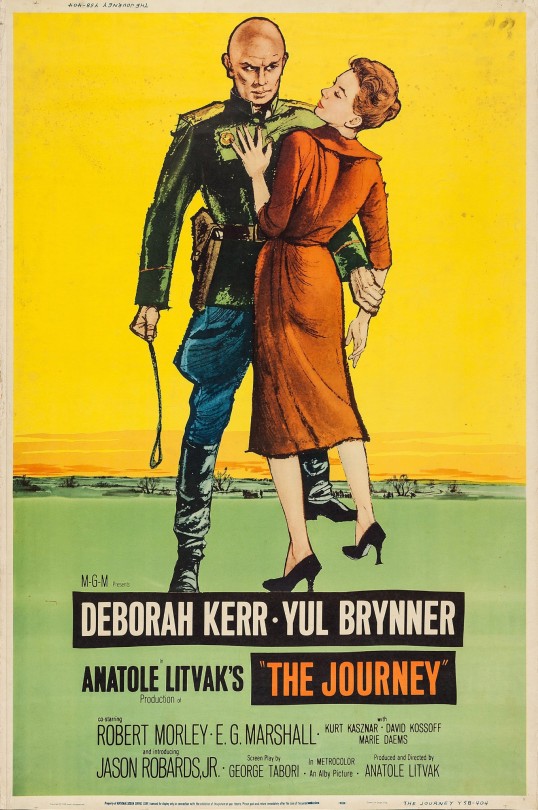
W A T C H I N G
#THE JOURNEY (1959)#YUL BRYNNER#DEBORAH KERR#JASON ROBARDS#Anatole Litvak#George Tabori#Robert Morley#E. G. Marshall#Anne Jackson#Ron Howard#Flip Mark#Kurt Kasznar#David Kossoff#Gérard Oury#Marie Daëms#Anouk Aimée#Maria Urban#Siegfried Schürenberg#Charles Regnier#Iván Petrovich#Senta Berger#1956 Hungarian revolution#Magyar#Hungary#WATCHING#🇭🇺
2 notes
·
View notes
Photo

The Devil Came from Akasava (1971)
#Soledad Miranda#Siegfried Schürenberg#The Devil Came from Akasava#Der Teufel kam aus Akasava#Adventure#Thriller#70s#Jess Frank#Paul André#Ladislas Fodor#Arne Elsholtz#Edgar Wallace#70's movie#grindhouse film#adventure film#spy spoof#70s adventure#gif#gifs#my gifs#my gif#cinema#film#movie#cult film#cult#cult cinema#cult movie#cult media
15 notes
·
View notes
Photo
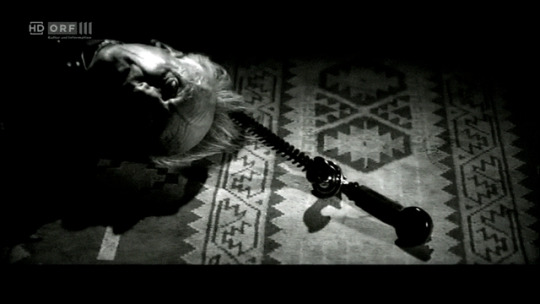
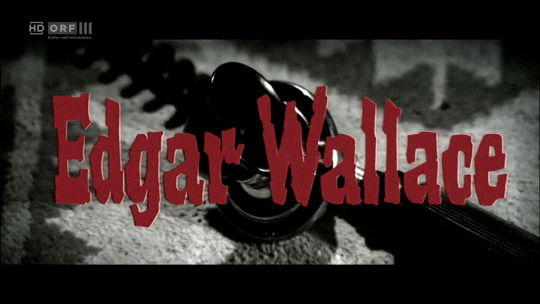

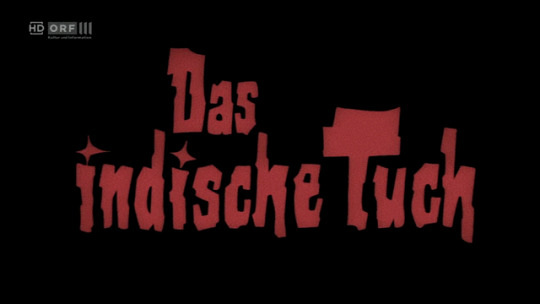
13. September 2017
Heute gesehen: Das indische Tuch, Spielfilm, BRD, 1963. Erstaufführung (BRD): 13. September 1963, Verleih: Constantin, FSK: 16, Laufzeit: ca. 88 Min., Bild: s/w (mit Farbelementen im Vorspann), Bildseitenverhältnis: 2,35:1. Produktion: Rialto Film. Regie: Alfred Vohrer. Drehbuch: Harald G. Petersson, George Hurdalek nach einer Vorlage von Edgar Wallace. Musik: Peter Thomas. Kamera: Karl Löb. Darsteller: Heinz Drache, Corny Collins, Klaus Kinski u.a. IMDB-Bewertung: 6.5/10
Handlung
„Nachdem Lord Lebanon mit einem indischen Tuch erwürgt wurde, lässt die Schar der Erbwilligen nicht lange auf sich warten. Zur Testamentseröffnung reist die komplette Familie an. Doch ein Gewitter hindert die Familienmitglieder an der Abreise. So muss noch der ein oder andere sein Leben lassen...
Wiederum ein typischer Edgar-Wallace-Krimi über einen Gestörten, der diesmal alle Mitglieder einer Familie nacheinander meuchelt. Hauptdarsteller Heinz Drache spielt übrigens keinen Kommissar, sondern den jungen Testamentsvollstrecker Frank Tanner, der das Geheimnis um die Meuchelmorde lüften will ...“ [Prisma]
Darsteller
Heinz Drache: Frank Tanner
Corny Collins: Isla Harris
Klaus Kinski: Peter Ross
Gisela Uhlen: Mrs. Tilling
Hans Nielsen: Mr. Tilling
Siegfried Schürenberg: Sir Henry Hockbridge
Richard Häussler: Dr. Amersham
Hans Clarin: Lord Edward Lebanon
Alexander Engel: Reverend Hastings
Ady Berber: Chiko
Eddi Arent: Richard Maria Bonwit
Elisabeth Flickenschildt: Lady Emily Lebanon
Wilhelm Vorwerg: Lord Frances Percival Lebanon (ungenannt) u.a.
Zu Beginn spricht Alfred Vohrer selbst die einleitenden Worte: „Hallo, hier spricht Edgar Wallace!“ Am Schluß hört man die Stimme von Rainer Brandt, der sich am Telefon als „Inspektor Fuchsberger“ von Scotland Yard meldet. Wilhelm Vorwerg war ein Szenenbildner, der in den Rialto-Produktionen hin und wieder kleine Rollen übernahm.
Ort der Handlung: Das Familienschloß „Marks Priory“. Studio- und Außenaufnahmen in Berlin.
Fazit
Filmdienst mag diesen Wallace-Film nicht:
„Ein Geisteskranker ermordet die gesamte Familie. Serien-Gruselkrimi nach Edgar Wallace, der auch die geringsten Erwartungen enttäuscht.“ [Filmdienst]
Es handelt sich um ein Mörderratespiel nach dem Muster von Agatha Christies Ten Little Indians, wo einer nach dem anderen einer geschlossenen Gesellschaft ermordet wird. Das Ergebnis ist nicht spektakulär. Erfüllt aber doch gewisse Klischee-Erwartungen: Eddi Arent und Siegfried Schürenberg sind wieder die komischen Chargen, Klaus Kinski ist sinister und undurchschaubar wie immer. Gegenüber dem irren Blick von Hans Clarins Rollenfigur wirkt Kinski jedoch geradezu „normal“. Elisabeth Flickenschildt gibt die dominante ältere Dame.
Veröffentlichungen
Mir lag eine Aufzeichnung der ORF-Ausstrahlung vom August vor (ORF3, 17.08.2017, 21:50-23:15 Uhr). Sie hatte eine Laufzeit von 82:56 Min. und ein Breitbildformat von 2,35:1.
[IMDB]; [OFDB]; [Filmdienst]; [Wikipedia (de)]; [Filmportal]. Bildquelle: ORF
1 note
·
View note
Text
Now then, a list of interesting things about the usual Wallace actors I found on Wikipedia:
Siegfried ‘Sir John’ Schürenberg is the German voice of Shir Khan in The Junglebook, he died at 93
Kinski was... crazy
Blacky Fuchsberger was the stadium announcer at the 1972 olympics in Munich, also an honorary inspector of Scotland Yard, the Sûreté and the Bavarian Criminal Police
Wolfgang Völz is widely known for his voice, he was for example the German voice of Pete Thornton in MacGyver. His son Benjamin is the German voice of Keanu Reeves, David Duchovny, James Spader, and Charlie Sheen.
Völz was born in the same house as Eddi Arent
Eddi Arent was known amongst directors to work very efficiently
#ollie watches Wallace#first step: wikipedia - done#I already have found a few more things to watch#but still no BTS#kinski's wiki article is wild and almost hard to get through#there wasn't that much about Arent in his' but the bits that were there sounded nice (and the last few years pretty sad)#eddi arent#being efficient and easy to work with :)#ollie's oldies
0 notes
Photo
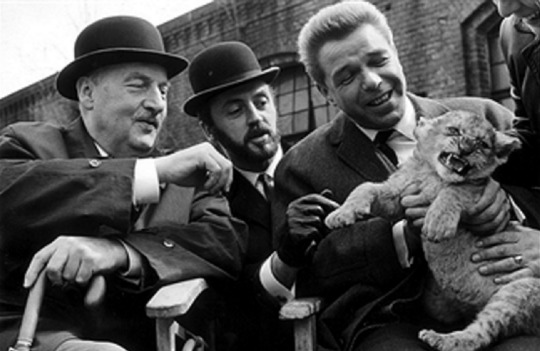
Heinz Drache mit seinen Schauspielkollegen Siegfried Schürenberg und Eddi Arent während der Dreharbeiten zu dem Edgar-Wallace-Film “Neues vom Hexer” (1965)
© Getty Images
12 notes
·
View notes
Photo










Der Bucklige von Soho | Alfred Vohrer | 1966
#Alfred Vohrer#Der Bucklige von Soho#1966#The Hunchback of Soho#Richard Haller#Monika Peitsch#Jutta Simon#Ilse Pagé#Susanne Hsiao#Suzanne Roquette#Uta Levka#Karin Field#Siegfried Schürenberg#Karin Kenklies
12 notes
·
View notes
Photo

Der Bucklige von Soho | Alfred Vohrer | 1966
Günther Stoll, Siegfried Schürenberg
3 notes
·
View notes
Photo
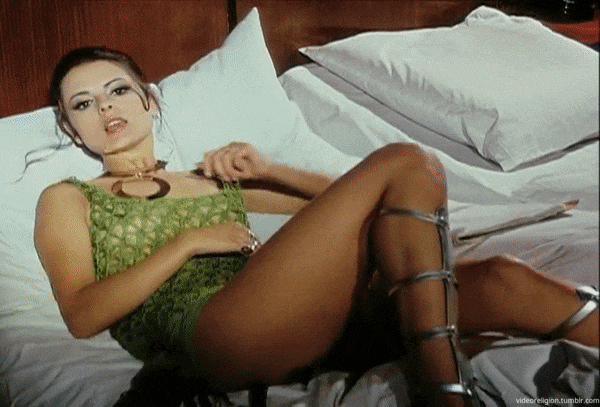
The Devil Came from Akasava (1971)
#Soledad Miranda#Siegfried Schürenberg#The Devil Came from Akasava#Der Teufel kam aus Akasava#Adventure#Thriller#70s#Jess Frank#Paul André#Ladislas Fodor#Arne Elsholtz#Edgar Wallace#70's movie#grindhouse film#adventure film#spy spoof#70s adventure#gif#gifs#my gifs#my gif#cinema#film#movie#cult film#cult#cult cinema#cult movie#cult media
22 notes
·
View notes
Photo




Der Zinker | Alfred Vohrer | 1963
Siegfried Schürenberg
33 notes
·
View notes
Photo

The Devil Came from Akasava (1971)
Happy Franco Friday!
#Soledad Miranda#Siegfried Schürenberg#The Devil Came from Akasava#Der Teufel kam aus Akasava#Adventure#Thriller#70s#Jess Frank#Paul André#Ladislas Fodor#Arne Elsholtz#Edgar Wallace#70's movie#grindhouse film#adventure film#spy spoof#70s adventure#my gif#my gifs#gif#film#cinema#movie#cult#cult cinema#cult film#Jess Franco#Franco Friday#jess franco friday#Jesús Franco
4 notes
·
View notes
Photo

Das Gasthaus an der Themse (AKA The Inn on the River) | Alfred Vohrer | 1962
Siegfried Schürenberg, Eddi Arent, Joachim Fuchsberger
#Siegfried Schürenberg#Eddi Arent#Joachim Fuchsberger#Alfred Vohrer#Das Gasthaus an der Themse#The Inn on the River#1962
7 notes
·
View notes